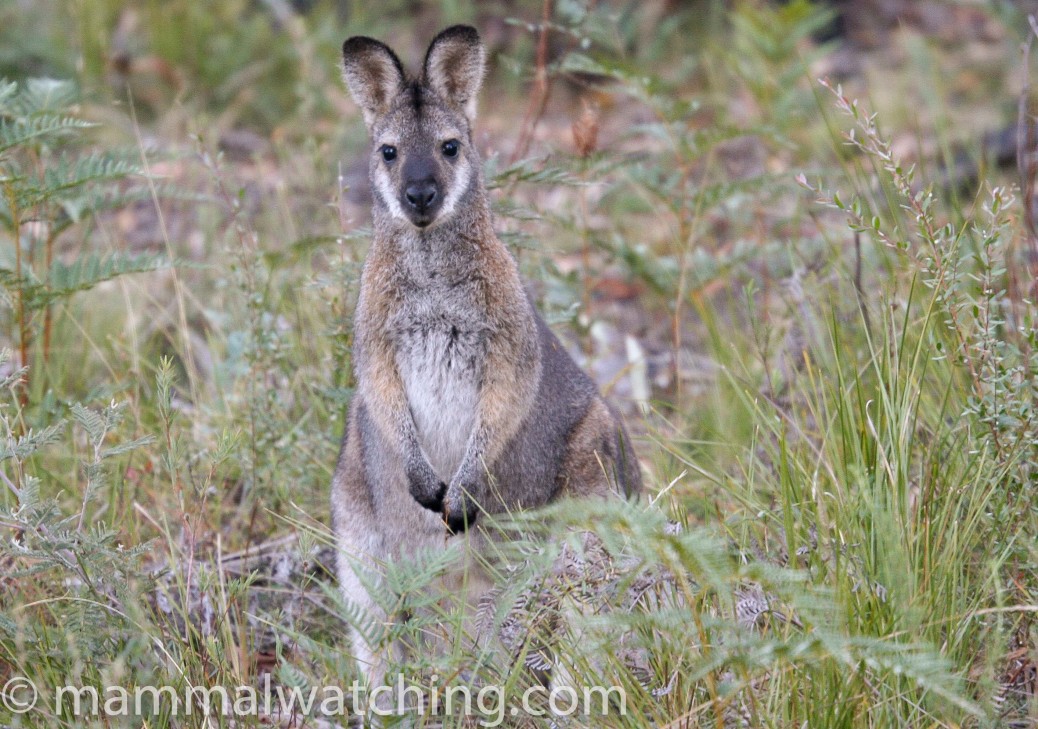
Australian Capital Territory
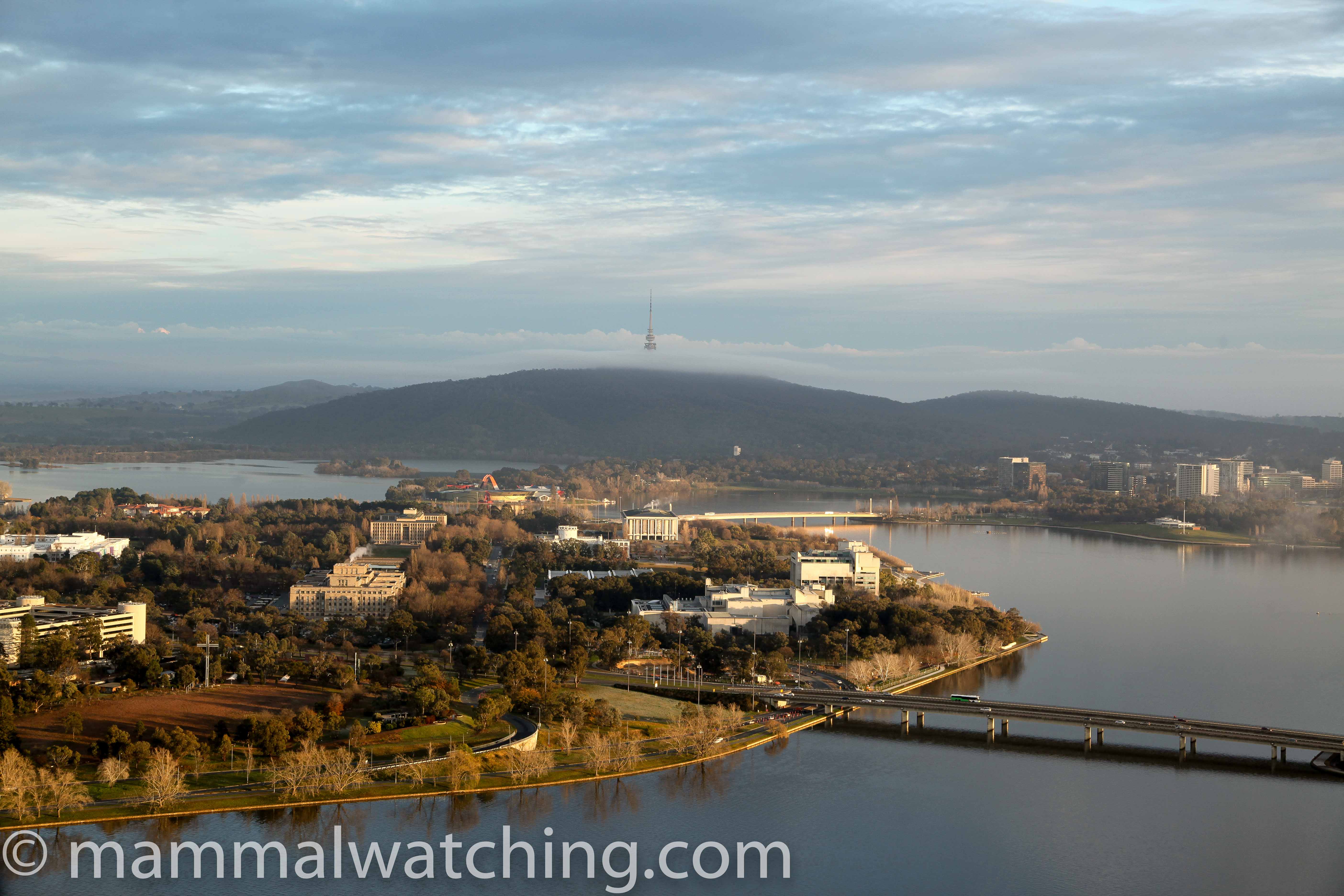
Canberra, the bush capital
Canberra the ‘ bush capital’ has good numbers of mammals living in and around the city centre. Eastern Grey Kangaroos are easy to see in many places – they are in just about any of the city’s nature parks. They are plentiful around Campbell Park (near the airport and behind the Defence Department Offices) for example, and can often be seen along the road to the airport in the early morning, as well as on the O’Connor Ridge near Belconnen. Brushtail Possums are very common throughout the city – they visit many suburban gardens. If you are struggling to find one then they are regular scavengers around the beer garden at the Australian National University campus in the evenings. Echidnas can turn up anywhere and there are Water Rats in Lakes Ginninderra and Burley Griffin (try looking around some of the quieter bits of either lake at any time of day).
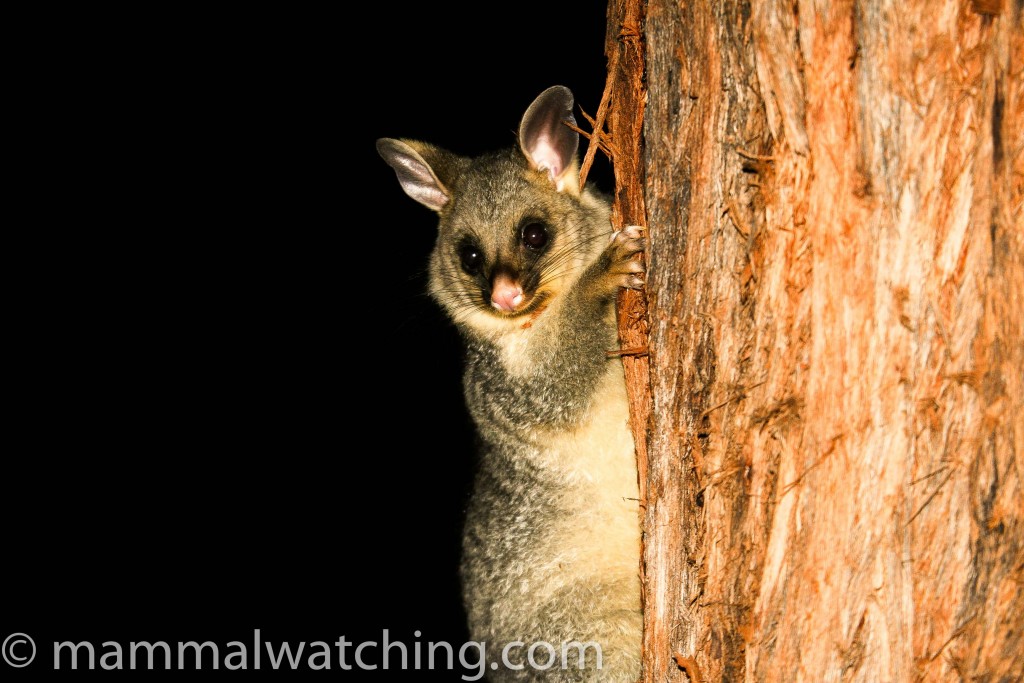
Common Brushtail Possum, Trichosurus vulpecula
Grey-headed Flying Foxes occasionally turn up in town and in 2009 I heard they had established a permanent summer camp in Commonwealth Park. You can often here White-striped Mastiff Bats (with their audible echolocation ping) flying around. Several other species of bats – Southern, Large and Little Forest bats; Gould’s and Chocolate Wattled Bats; and Lesser and Gould’s Long-eared Bats could turn up if you can go harp trapping or checking nestboxes. Southern Freetail Bats are present in nearby New South Wales, so ought to be in the ACT too.
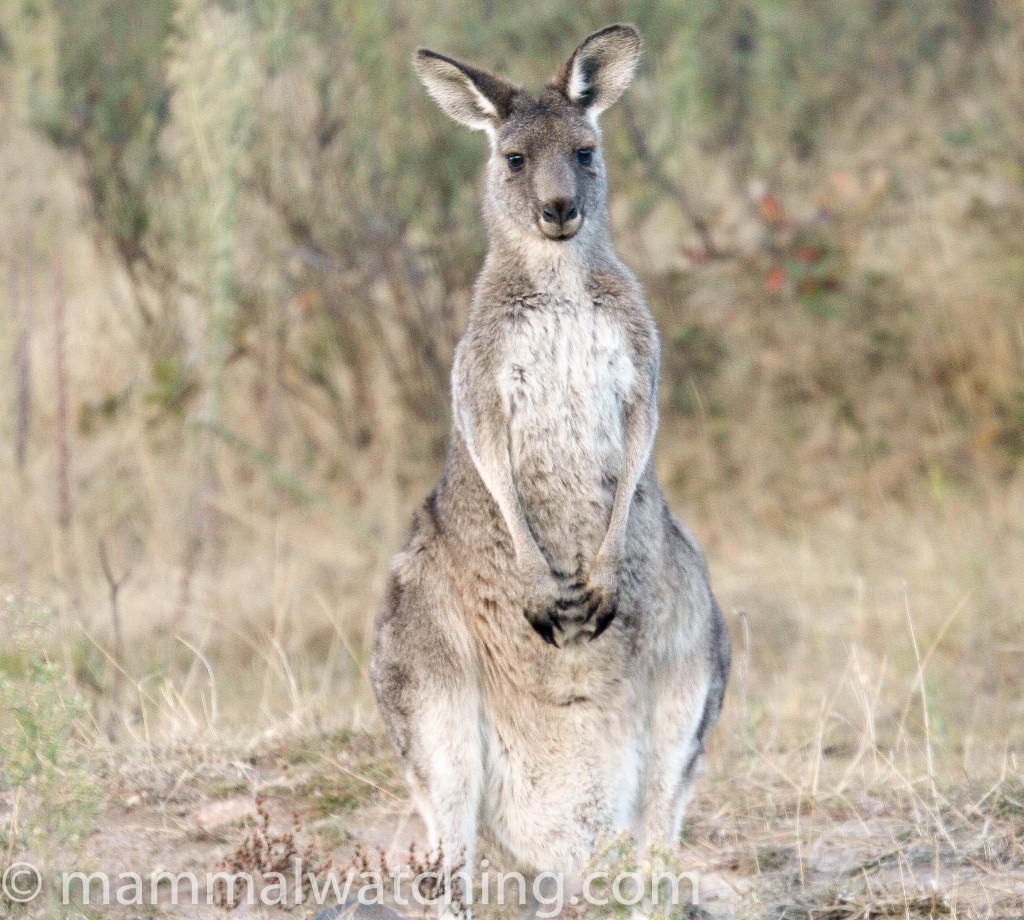
Eastern Grey Kangaroo, Macropus giganteus
Tidbinbilla Nature Reserve is less than an hour’s drive from the city centre. It is home to a mix of captive animals (Koalas and Brush-tailed Rock Wallabies for example) and wild ones. It was obliterated by the big bushfires of 2003 and this information relates to the pre-fire days though I imagine much of this will hold true again today. Eastern Grey Kangaroos are plentiful and Red necked Wallabies were also pretty easy to find. Black Wallbies (aka Swamp Wallabies, Wallabia bicolor) are in the wetter gullies in the park. Tidbinbilla was one of the most reliable spots I knew to see wild Platypus: during the late afternoon they could usually be spotted in several of the dams. The reserve closes at dusk, but rangers used to run spotlighting walks occasionally. Ringtail Possums and Common Wombats were usually around (the stretch of road from Tidbinbilla back through to Queanbeyan is another excellent place to look for Wombats at night). I have also seen Sugar Gliders (at night) and Echidnas and Agile Antechinuses (during the day). Feathertail Gliders and Eastern Pygmy Possums are present, though I have never seen them there. I suppose there must be Bush Rats too.
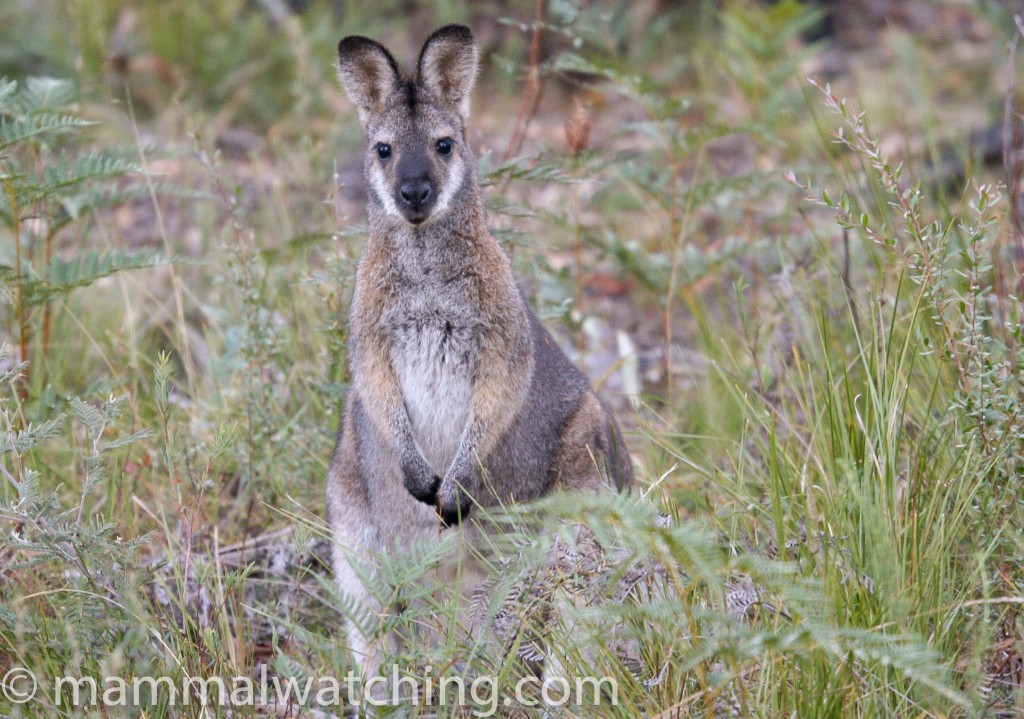
Red-necked Wallaby, Macropus rufogriseus
Namadgi National Park, which comprises most of the ACT’s land area, has plenty of Kangaroos. Uriarra Road up towards Picadilly Circus is good spot to look for Red necked Wallabies, especially early in the morning. Other mammals in the park include Spotted-tailed Quolls and alledgedly Brush-tailed Phascogales (neither of which are seen often, if ever). I saw Koalas there once.
There are, of course, the usual parade of European ferals in the ACT, including Foxes, Rabbits, Hares, Goats, Pigs, Dogs and Cats.
Adjoining Bits Of NSW
Though technically in NSW, Bungendore is to all intents and purposes a satellite suburb of Canberra (though I reckon most of the locals would fiercely defend their New South Welshdom). Feral Fallow Deer inhabit the bush and farmland around town, and I saw one while I was spotlighting along the road to Tarago. There are plenty of Wombats around here too.
Tallaganda State Forest, near Hoskinstown, is a mixture of dry and wettish eucalypt forest. It is a good place to see Greater Gliders if you go for a walk with a spotlight. They have bright eyeshine and I found them every time I visited, usually high up in tall stags (stags are dead trees with plenty of hollow sections in their trunks and limbs). It is worth checking out suitable nest holes with the spotlight beam. I’ve also seen Wombats and Sugar Gliders here, as well as Black Wallabies. Tallaganda is reputed to be a good spot for Tiger Quolls. They are not easy to see, but you should focus your searching in the wetter gullies.
Further Afield In NSW
The New South Wales page has information about Charlotte’s Pass, on Mount Kosciusko, where the Mountain Pygmy Possum still clings on, and the quite uncommon Broad-toothed Rat is often caught. There is also information about Bateman’s Bay, the closest coastal town to Canberra, which is a good spot to see Yellow-bellied Gliders (which are also worth listening to for their spectacularly strange call).
Community Reports
Southern Greater Gliders in Tallaganda State Forest, 2024: Murray Thompson’s notes on a reliable spot for Greater Gliders 60km east of Canberra.
New South Wales and the ACT, 2017: Jimmy Lamb, 1 week with species including Long-nosed Bandicoot, Yellow-bellied, Sugar and Greater Gliders, Echidna, Platypus and an Eastern Pygmy Possum.
Also See
Please email me if you have tips for mammal watching in this area.


Leave a Reply
You must be logged in to post a comment.